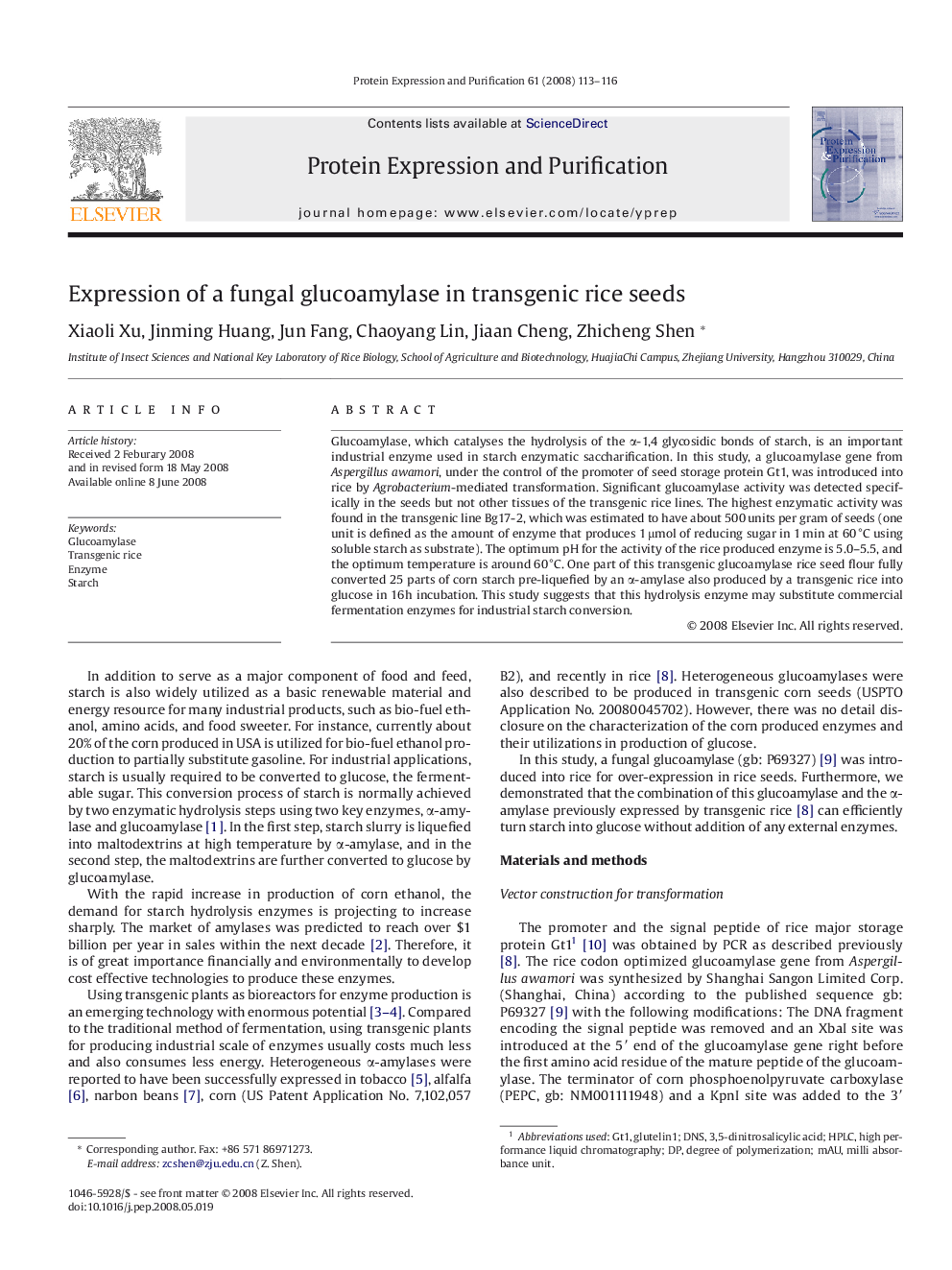| Article ID | Journal | Published Year | Pages | File Type |
|---|---|---|---|---|
| 2021429 | Protein Expression and Purification | 2008 | 4 Pages |
Glucoamylase, which catalyses the hydrolysis of the α-1,4 glycosidic bonds of starch, is an important industrial enzyme used in starch enzymatic saccharification. In this study, a glucoamylase gene from Aspergillus awamori, under the control of the promoter of seed storage protein Gt1, was introduced into rice by Agrobacterium-mediated transformation. Significant glucoamylase activity was detected specifically in the seeds but not other tissues of the transgenic rice lines. The highest enzymatic activity was found in the transgenic line Bg17-2, which was estimated to have about 500 units per gram of seeds (one unit is defined as the amount of enzyme that produces 1 μmol of reducing sugar in 1 min at 60 °C using soluble starch as substrate). The optimum pH for the activity of the rice produced enzyme is 5.0–5.5, and the optimum temperature is around 60 °C. One part of this transgenic glucoamylase rice seed flour fully converted 25 parts of corn starch pre-liquefied by an α-amylase also produced by a transgenic rice into glucose in 16 h incubation. This study suggests that this hydrolysis enzyme may substitute commercial fermentation enzymes for industrial starch conversion.
